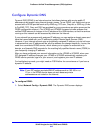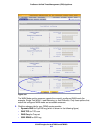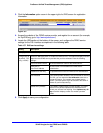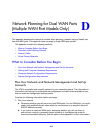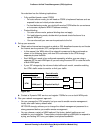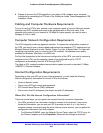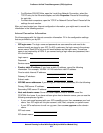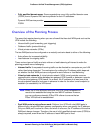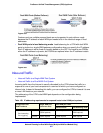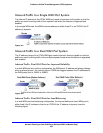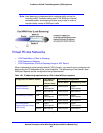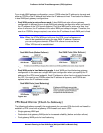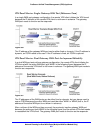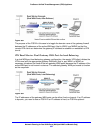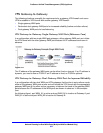
Network Planning for Dual WAN Ports (Multiple WAN Port Models Only)
626
ProSecure Unified Threat Management (UTM) Appliance
• Fully qualified domain name: Some organizations use a fully qualified domain name
(FQDN) from a Dynamic DNS service provider for their IP addresses.
Dynamic DNS service provider: ______________________
FQDN: ______________________
_________________________________________________________________________
Overview of the Planning Process
The areas that require planning when you use a firewall that has dual WAN ports such as the
UTM include the following:
• Inbound traffic (port forwarding, port triggering)
• Outbound traffic (protocol binding)
• Virtual private networks (VPNs)
The two WAN ports can be configured on a mutually exclusive basis to either of the following:
• Auto-rollover for increased reliability
• Load balance for outgoing traffic
These various types of traffic and auto-rollover or load balancing all interact to make the
planning process more challenging:
• Inbound traffic. Unrequested incoming traffic can be directed to a computer on your LAN
rather than being discarded. The mechanism for making the IP address public depends
on whether the dual WAN ports are configured for auto-rollover or load balancing.
• Virtual private networks. A virtual private network (VPN) tunnel provides a secure
communication channel either between two gateway VPN firewalls or between a remote
VPN client and gateway VPN firewall. As a result, the IP address of at least one of the
tunnel endpoints needs to be known in advance in order for the other tunnel endpoint to
establish (or reestablish) the VPN tunnel.
Note: When the UTM’s WAN port rolls over, the VPN tunnel collapses and
needs to be reestablished using the new WAN IP address. However,
you can configure automatic IPSec VPN rollover to ensure that an
IPSec VPN tunnel is reestablished.
• Dual WAN ports in auto-rollover mode. Rollover for a UTM with dual WAN ports is
different from a single WAN port gateway configuration when you specify the IP address.
Only one WAN port is active at a time, and when it rolls over, the IP address of the active
WAN port always changes. Therefore, the use of a fully qualified domain name (FQDN) is
always required, even when the IP address of each WAN port is fixed.



